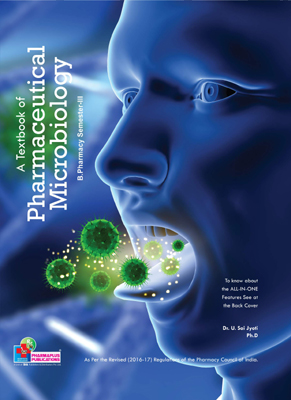

Note: Please check your Spam or Junk folder, in case you didn't receive the email with verification code.
SYLLABUS
Unit-I
Introduction, history of microbiology, its branches, scope and its importance. Introduction to prokaryotes and eukaryotes, study of ultra-structure and morphological classification of bacteria, nutritional requirements, raw materials used for culture media and physical parameters for growth. Growth curve, isolation and preservation methods for pure cultures, cultivation of anaerobes, quantitative measurement of bacterial growth (total & viable count). Study of different types of phase contrast microscopy, dark field microscopy and electron microscopy.
Unit-II
Identification of bacteria using staining techniques (simple, Gram’s and acid fast staining) and biochemical tests (IMVIC). Study of principle, procedure, merits, demerits and applications of physical, chemical, gaseous,radiation and mechanical methods of sterilization. Evaluation of the efficiency of sterilization methods. Equipments employed in large scale sterilization, sterility indicators.
Unit-III
Study of morphology, classification, reproduction/replication and cultivation of fungi and viruses. Classification and mode of action of disinfectants. Factors influencing disinfection, antiseptics and their evaluation for bacteriostatic and bactericidal actions. Evaluation of bactericidal & bacteriostatic. Sterility testing of products (solids, liquids, ophthalmic and other sterile products) according to IP, BP and USP.
Unit-IV
Designing of aseptic area, laminar flow equipments, study of different sources of contamination in an aseptic area and methods of prevention, clean area classification. Principles and methods of different microbiological assays. Methods for standardization of antibiotics, vitamins and amino acids. Assessment of a new antibiotic.
Unit-V
Types of spoilage, factors affecting the microbial spoilage of pharmaceutical products, sources and types of microbial contaminants, assessment of microbial contamination and spoilage. Preservation of pharmaceutical products using antimicrobial agents, evaluation of microbial stability of formulations. Growth of animal cells in culture, general procedure for cell culture, primary, established and transformed cell cultures. Application of cell cultures in pharmaceutical industry and research.
 No Preview is available for this book
No Preview is available for this book

 Get 100 instant uPoints on the purchase of Rs.100 or above for each order.
Get 100 instant uPoints on the purchase of Rs.100 or above for each order.
CategoriesPharmacy

Format PDF

TypeeBook